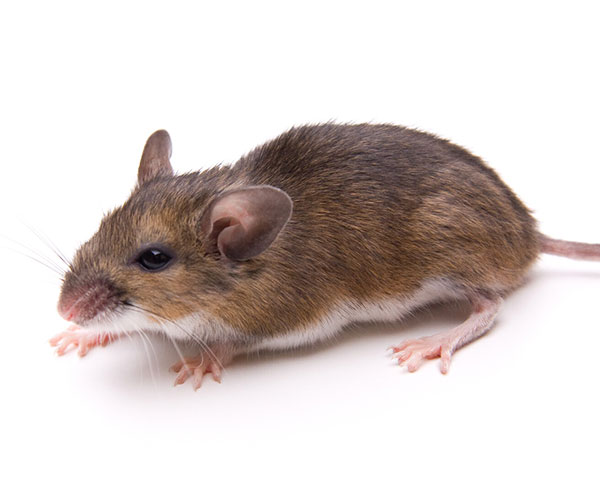SERVICE REQUEST?
Fill out the form below.
Find our nearest location
Your Local Office

White-footed Mouse
Attribution: Chandler B. Beach, A.M, via Wikimedia Commons
Size:
Body is up to two inches in length.
Color:
This species has several closely related cousins that are colored similarly. All species are bicolored — the top is light brown to red-brown and the feet and underbelly are pure white.
Behavior:
Unlike the house mouse, the white-footed mouse is not found in cities but is associated more with rural areas and buildings located in or near wooded areas. It does not commonly invade homes, but on occasion, one or more white-footed mice may invade a particular building. The white-footed mouse is a medically important species because it is a key host for blacklegged ticks (Ixodes scapularis and Ixodes pacificus), which carry and transmit Lyme disease. In at least one case in New York, this species was also documented with hantavirus. A closely related cousin to this species, the deer mouse, is the primary carrier of hantavirus.
White-footed mice prefer the outdoors where they nest in tree holes, hollow logs, under logs, and in piles of stones, branches or logs. If inside, they are most often found in areas where the least human activity occurs, such as attics, garages, basements and crawl spaces.
If you live in an area where white-footed mice have been seen or could be present, it may be prudent and desirable to hire an experienced professional to control the mice. Remember, the risk of actually encountering hantavirus-infected white-footed mice is very remote, but taking the following steps can minimize any potential health risk:
- Never sweep or vacuum mouse droppings and dust or debris in mouse activity areas.
- Wear a respirator equipped with a High Efficiency Purifying Air (HEPA) filter as well as unvented protective goggles, and impermeable latex or rubber gloves.
- Soak mouse droppings and dusty areas with an EPA-registered disinfectant then wipe up with paper towels. Place the soiled towels in a sealed plastic bag and dispose in an outdoor trash receptacle.
- Clean protective equipment with the EPA-registered disinfectant, then again with soap and water, and allow to air dry before the next use.
- Spray dead white-footed mice with EPA-registered disinfectant before disposal. Handle traps wearing protective latex or rubber gloves and a HEPA-equipped respirator. Try to avoid touching or handling the carcass. Dispose of the carcass in a sealed plastic bag in an outdoor trash receptacle.
Family Name:
Peromyscus leucopis
Read What Our Clients
Are Saying
My Terminix tech Scott is the best! He is professional, courteous and absolutely thorough about his job. Thank you for sending such a blessed tech to my house. Hamlet, NC
This letter is to say how pleased we are here at Morreene West Apartments with your services. We are very pleased with the technician, Christopher. He does a great job. Durham, NC
Terminix has consistently offered our apartment complex reliable, competent service. We are completely satisfied with their knowledgeable representative who is always punctual and does a superior job for us every time. Chapel Hill, NC
I would like to take the time to thank you for giving us such great service here at Carver Pond Apartments. Your Pest Technician Christopher Mitchell has provided us with excellent service over the last few months. Christopher is such a great help to us in providing helpful information so that we can better serve our residents here at Carver Pond. Durham, NC
SERVICE REQUEST?
Fill out the form below.